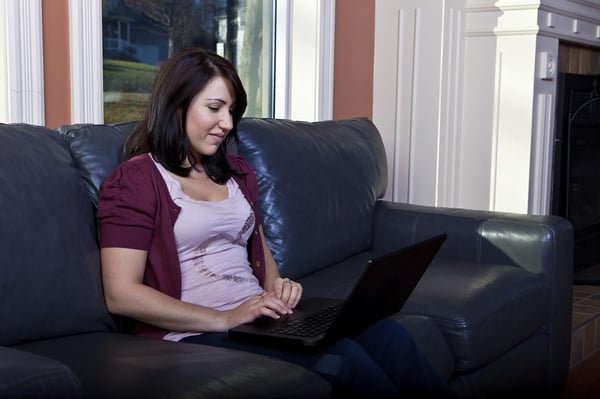Published on
Low-Cost Providers Force Traditional Institutions to Rethink Pricing Models

The following interview is with Shai Reshef, president and founder of University of the People (UoPeople). Reshef launched UoPeople in 2009. The university is a non-profit, tuition-free online university offering degrees in business administration and computer science. In this interview, Reshef discusses the mission of UoPeople and shares his thoughts on the impact his and other low-cost higher education providers are creating in the higher education marketplace, and what their lasting impact will be.
1. How is the tuition model at UoPeople designed?
Well, we are tuition-free. However, we ask our students to pay for exams. So the idea is that we use everything that is free on demand: open-source technology, open education and resources and volunteers — all of our academics and most of the people that are enrolled with the University are volunteers. Using them, coupled with peer-to-peer learning, we were able to cut down almost the entire cost of higher education. All we ask our students to pay is to cover the cost of exams and, even that, only if they have it. If they don’t, we offer them a variety of scholarships to make sure that nobody is being left behind for financial reasons.
2. Why did you decide that UoPeople was a necessary and worthwhile venture?
Well, I was in for-profit education for over 20 years. Among other things, I started the first online university, for-profit university, outside of the [United States] in the Netherlands. And that’s where I realized how powerful online learning can be, because we had students from all over the world; they stayed at home, they kept their job, and still had this great European education. However, at the same time, I realized that for most people it was nothing but wishful thinking.
So, after selling all my businesses — including this one — I decided that I wanted to start my own university and do it in a way to give back. The idea was that since there are millions and millions of people around the world who cannot afford higher education, there are the tools to enable them, these days, to study tuition-free. And when you think about it, there are people who cannot afford higher education for financial reasons — millions of them. There are a lot of other students who live in places where there are not enough universities. They take a placement exam — either they’re in or they’re out — if they’re out, it doesn’t mean that they are not qualified for higher education; it just means there is no room for them.
There are others that are deprived from higher education for cultural reasons; women in many countries in Africa would be one example. And there are lots of people that cannot afford higher education because of personal reasons.
For all of these people, the Internet was invented. There is no better reason for having the Internet than spreading the knowledge and offering people to get higher education for free. I believe that education is a right, not a privilege, and every person should get this right.
3. What most differentiates UoPeople from other colleges and universities?
Obviously the main thing is that we are tuition-free and, even if someone can pay for the entire cost of exams, a B.A. would not cost more than $4,000 over four years, so the cost structure obviously is very different. But, also, we put students in a small classroom of 20 to 30 students to make sure that those who need personalized attention get it. So, we put the students in a small classroom, 20 to 30 students … and with them they study for four years, so it’s very different. It’s different both in terms of structure, both in terms of the way they study and in terms of who are the instructors, teachers and leaders; they are volunteers from top universities of the world.
4. Since opening UoPeople, have you found that other institutions are adapting to meet the pricing you and other low-cost higher education providers are offering?
Not really, but I think it’s coming. I believe that us showing … that it works and it is sustainable will bring many other institutions to adopt our financial model. I think that it’s actually a must because we show that higher education can be way cheaper than what it is right now.
We are the first, but definitely will not be there alone for a long time.
5. Looking into the future, what do you think the long-term and lasting impact of UoPeople will be on the higher education marketplace?
The price structure to show that education can be way cheaper, but I think that it goes beyond that. We are basically building a model to show universities that they can grow way beyond their current boundaries or borders. So, we’re saying that any university can add a zero to the number of students that they have; instead of having 10- to 20,000 students they have 100- to 200,000 students. It’s feasible; we show that it is. And if we can do it, they can do it as well because they have the resources.
I think what we’re doing will have a great impact on developing countries as well, because we’re building a model. And,] the model tells developing countries’ governments that instead of spending the few million they have to build their own Harvard, Stanford, Oxford [Universities], they should use the money differently. Because right now they spend the money trying to build these institutions … but it’s not becoming nearly Oxford, Stanford or Harvard because you can’t build these institutions with a few million [dollars] and not in a few years. … What we say is look at what we’re doing, do what we do and you can educate every single person in your country using our model. And, think what a great leap it will be to those countries. So we believe our impact is going way beyond our students to change the nature of higher education worldwide.
6. Is there anything you’d like to add about the impact of low-cost higher education providers on the sector?
I would just say two things. First, that this is future. I think the world is going towards having online education [as] a very a significant part of any education. I don’t think that universities can continue for a long time with the current price structure just for the very reason that students cannot afford it. So, all of them are going to adopt online learning, if not as a full program, at least half of the students take some courses online. It would save the university — but even more importantly, the students — a lot of money. Just think what happens if universities will come to students and say, “The first year, you’re going to study free online.” Well, for the students, they will save one-fourth of their higher education cost. For the universities, since most of them right now cannot accept the students that want to study, they can take many more students and they will not be hurt financially. So, I think that the future is going toward online learning.
I would also add that since we, our students … are coming from hardship — many of them are survivors of the genocide in Rwanda or the earthquake in Haiti. Many of them are refugees or just people who went through a very hard life. Many of them cannot afford even the cost of exams. We created for these students the first ever micro-scholarship program for students who cannot afford the cost. [They] can go online, present their case and ask our supporters to support them with as much as they want — $5, $10 — until they meet what they need.
Author Perspective: Administrator



